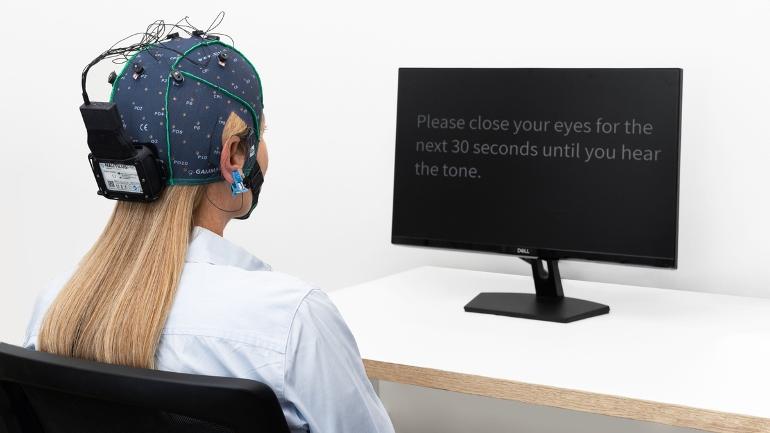By learning how to get agitated avatars to sit down in a virtual office, people with PTSD can regain control over their emotions and lower biomarkers associated with the condition.
June is Post-Traumatic Stress Disorder Awareness Month, a fitting time for the soft launch in the United States of Prism for PTSD, the first noninvasive self-neuromodulation digital therapy for treating this common mental-health issue.
According to the US National Institutes of Health, PTSD can develop after someone experiences or witnesses a life-threatening event such as combat, a natural disaster, a car accident, or sexual assault. Symptoms may include nightmares, uncontrollable thoughts about the event, flashbacks and avoidance of the distressing memories.
Meant as an adjunct to psychotherapy or pharmacotherapy, Prism uses an EEG cap that is paired with interactive audiovisuals to train patients in how to lower the biomarker associated with PTSD, thus regaining control over their brain’s emotional regulation system.
Prism for PTSD was developed at Haifa-based GrayMatters Health based on patented technology from Dr. Talma Hendler, a professor of neuroscience and psychiatry at Tel Aviv University and director of the Sagol Brain Institute at Tel Aviv Sourasky Medical Center.
Hendler used advanced statistical models to fuse EEG and fMRI data of specific brain regions, creating an EEG-fMRI Pattern (EFP) biomarker of brain regions associated with mental disorders. Prism for PTSD uses an amygdala-derived-EFP biomarker.
In March, the device received US Food and Drug Administration clearance for marketing.
Get the avatars to sit down
Under the supervision of their mental healthcare practitioner, patients undergo 15 half-hour sessions with Prism for PTSD every two months and then receive booster sessions as needed to reinforce the training.
What they see on the screen is a bunch of agitated avatars (representing the amygdala-derived-EFP biomarker for PTSD) standing at a reception desk in a clinic. The goal is to self-neuromodulate to get the avatars to sit down, which each patient accomplishes in his or her own way.
